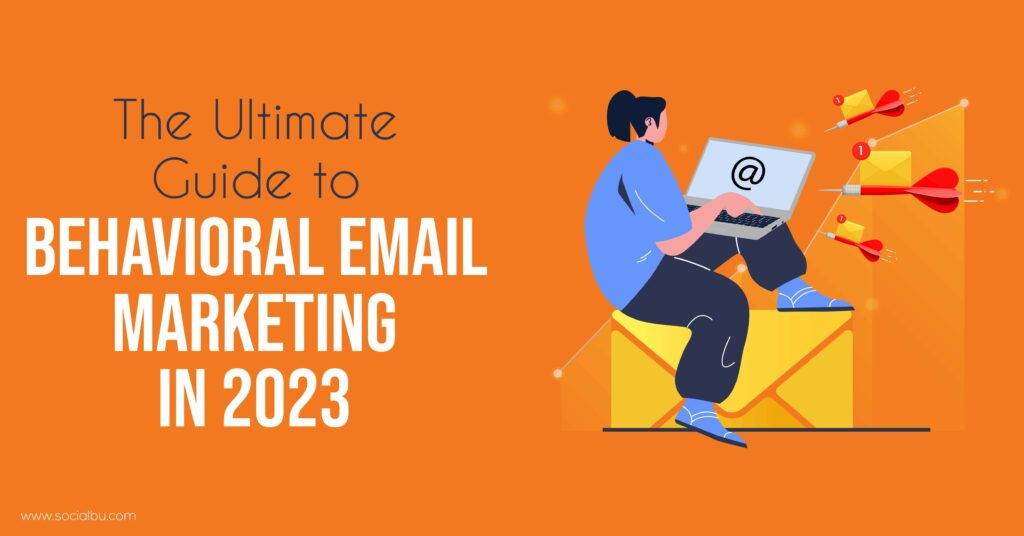Perhaps your consumers are abandoning too many online carts, or they are refusing to complete forms that you need them to complete. How to persuade them to act in your favor? Well, with behavioral email marketing!
Finding out what users have been doing and contacting them with pertinent messages and offers constitutes behavioral email marketing. Considering how useful and pertinent they are, this type of email is eagerly anticipated by its recipients.
Are you interested in finding out more information about behavioral email marketing? We will assist you in commencing! To understand everything there is to learn concerning behavioral email marketing, keep reading this article.
The Essence of Behavioral Email Marketing
An automated, customized email to your prospects that is dependent on their activities and interactions with your business is known as a behavioral email. You may reach your audience with precisely what they need at the right time by using behavioral email marketing.
In a typical email campaign, marketers build an offer, identify a group of potential customers, and then send the email. The issue with this strategy is that marketers are aware of the interested parties, but they are still determining the appropriate time to get in touch. That issue is resolved by behavioral emails.
Concentrating on user behavior and behavior patterns helps you understand your users’ expectations. Additionally, you may tailor the emails focusing on the many interactions and actions that people have on various social media platforms, websites, etc.
Types of Behavioral Emails
Emails with behavioral content can take many different forms because behavioral activities differ from person to person. But behavioral emails typically fall into one of the following three groups:
1. Registration Emails
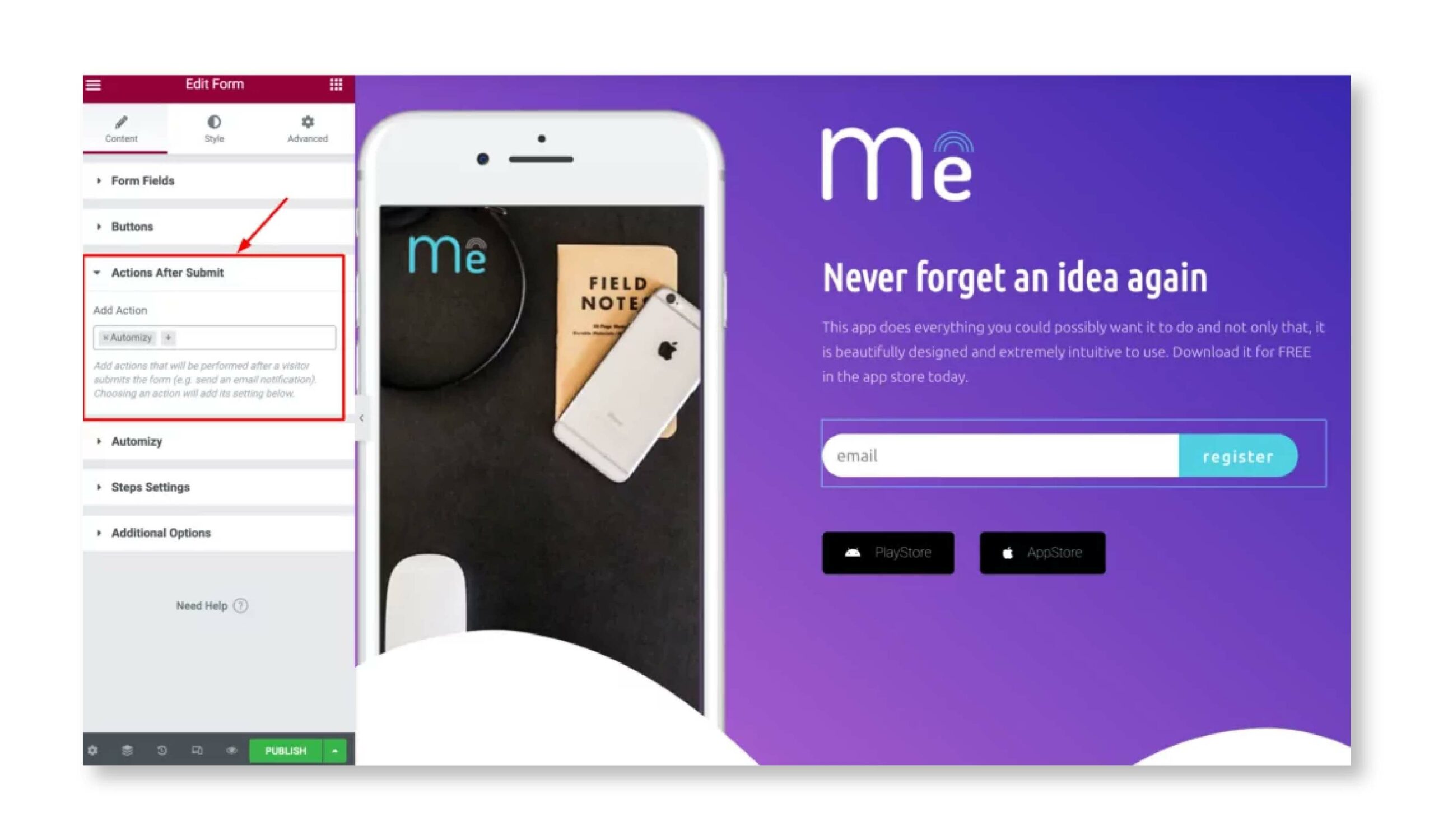
The initial email(s) sent to a new lead are often registration emails. These include welcome emails, getting started emails, FAQs, onboarding emails, etc. These emails will greet and enlighten your leads about your service.
2. Conversion Emails
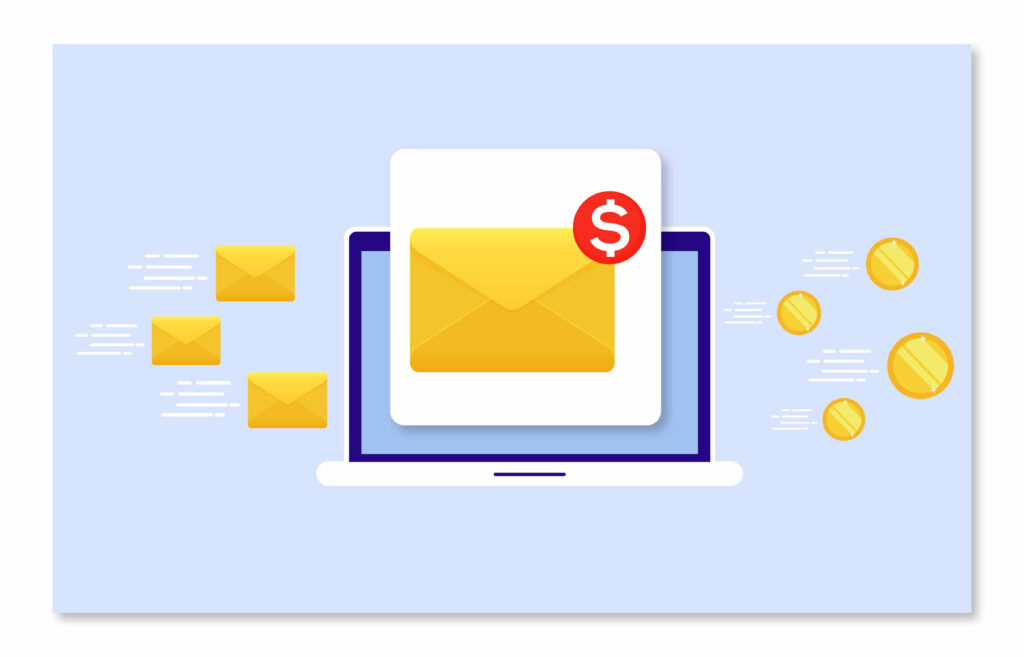
When certain actions take place, including new sign-ups, user registrations, opt-ins, downloads, and transactions, conversion emails are sent. In this kind of communication, the user is thanked and informed of the purchase. This kind of email enhances the credibility and reputation of your company.
3. User Encouragement Emails
This kind of behavioral email is sent by email marketers to encourage users to become customers. It is a fantastic idea to get in touch with users when they browse any products, abandon shopping carts, share your content, watch videos, interact by leaving comments, add items to wish lists, etc.
Why is Behavioral Email Marketing Important?
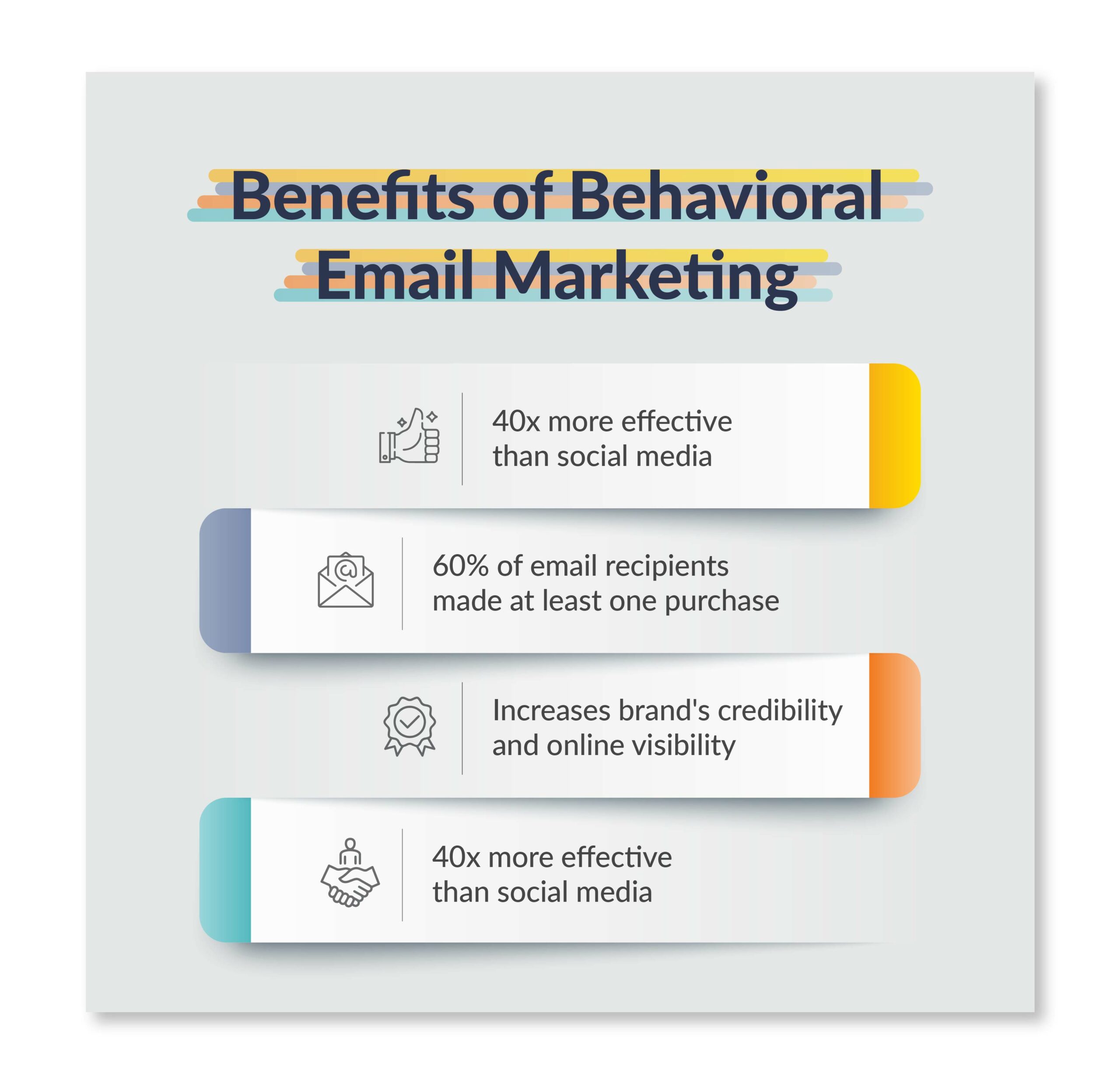
A survey by MarketingSherpa found that 37% of marketers believe behavioral marketing to be very successful. Unexpectedly, only 20% of them are utilizing behavioral marketing. Why? Due to the fact that they have not done enough research on behavioral email marketing and believe it to be a magic trick.
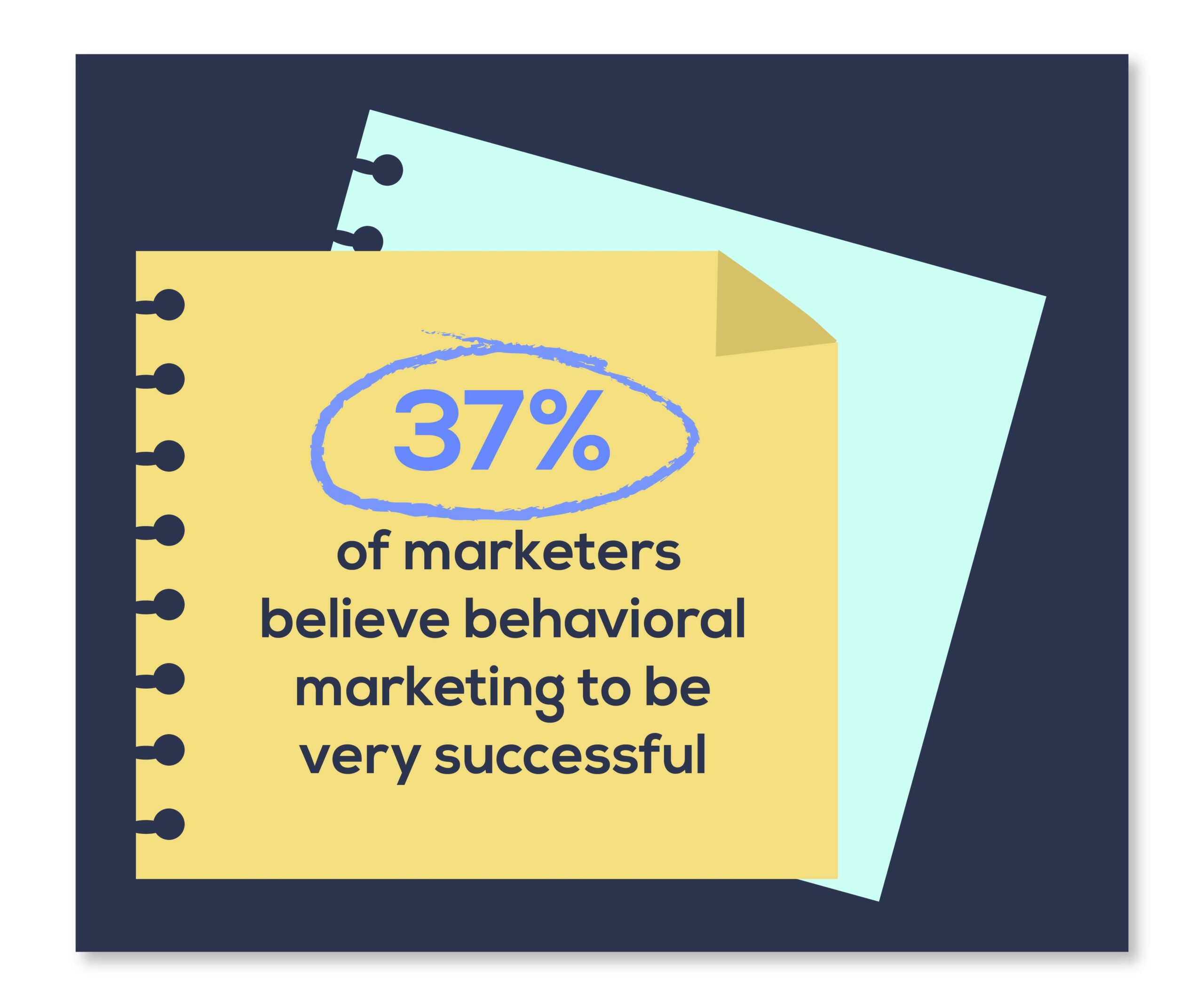
Despite the fact that it produces miraculous outcomes, behavioral marketing is not magic. For using behavioral email marketing to its full potential, you need a little knowledge, skill, and equipment.
How might behavioral marketing improve your company’s marketing plan as a whole? Let’s have a detailed look!
1. Excellent Comprehension of the Buyers’ Expectations
You learn more about your clients and their needs when you examine user activity. As a result, you can give them exactly what they need at the appropriate time.
Users’ whole experience is made buttery smooth by behavior-based emails. Additionally, the encounter encourages people to buy your goods or services.
2. Enhances Effectiveness

Emails that are sent in response to user behavior assist, direct, and remind users of their prior encounters with your company. They are, therefore, more eager to read these emails right away.
Subscriptions, social media activity, email opening rates, and income all increase as a result. Website traffic will skyrocket too. But first, you need to build one through Wix, using a Wix pricing plan that complies with the motto “what you see is what you pay for,” i.e., with no additional fees. With this website-building service, you are fully aware of the features you are purchasing and how to obtain a lower price.
3. Provides Ongoing Improvements
Users’ conduct reveals both your brand’s strengths and weaknesses. Additionally, you gain knowledge of what the users desire. As a result, you may continually adjust your marketing plan to account for user behavior.
4. Guarantees Relevance
The success of your email marketing mostly hinges on how pertinent it is to the recipient. Using behavioral email increases the prospects’ relevancy to your campaign. You may better customize emails for your subscribers with behavioral emails.
On the other side, the subscribers are more likely to trust your company because of the campaign’s relevancy. They engage with your company more, and you generate more sales as a result!
5. Eases the Purchasing Process
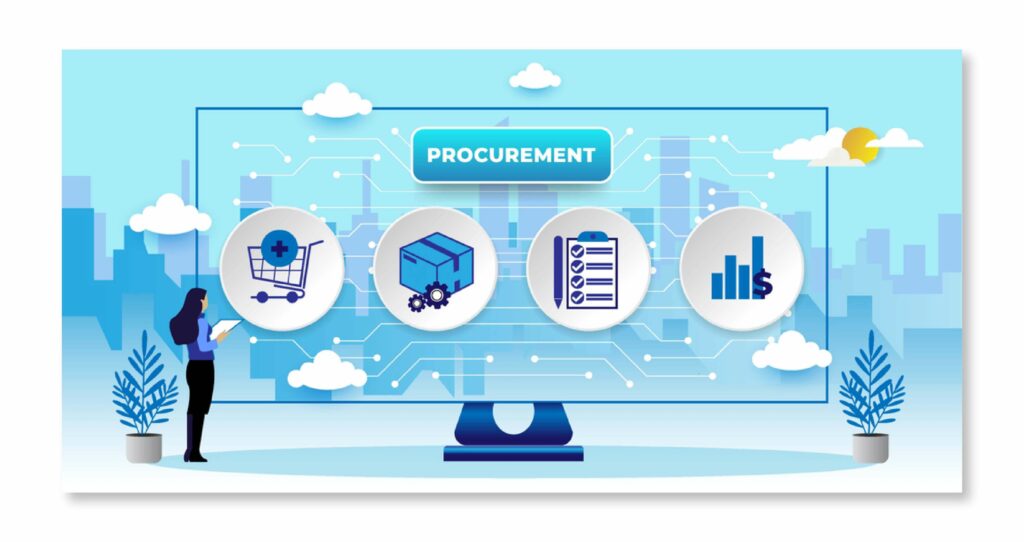
Marketing’s main objective is to make the purchasing process easier. Are your marketing initiatives carrying that out?
By concentrating on behavioral email, you may simplify the purchasing process. The emails you send will direct users through each step because you will be delivering them in response to their actions. They will eagerly anticipate your subsequent communications.
6. Boosts Client Loyalty
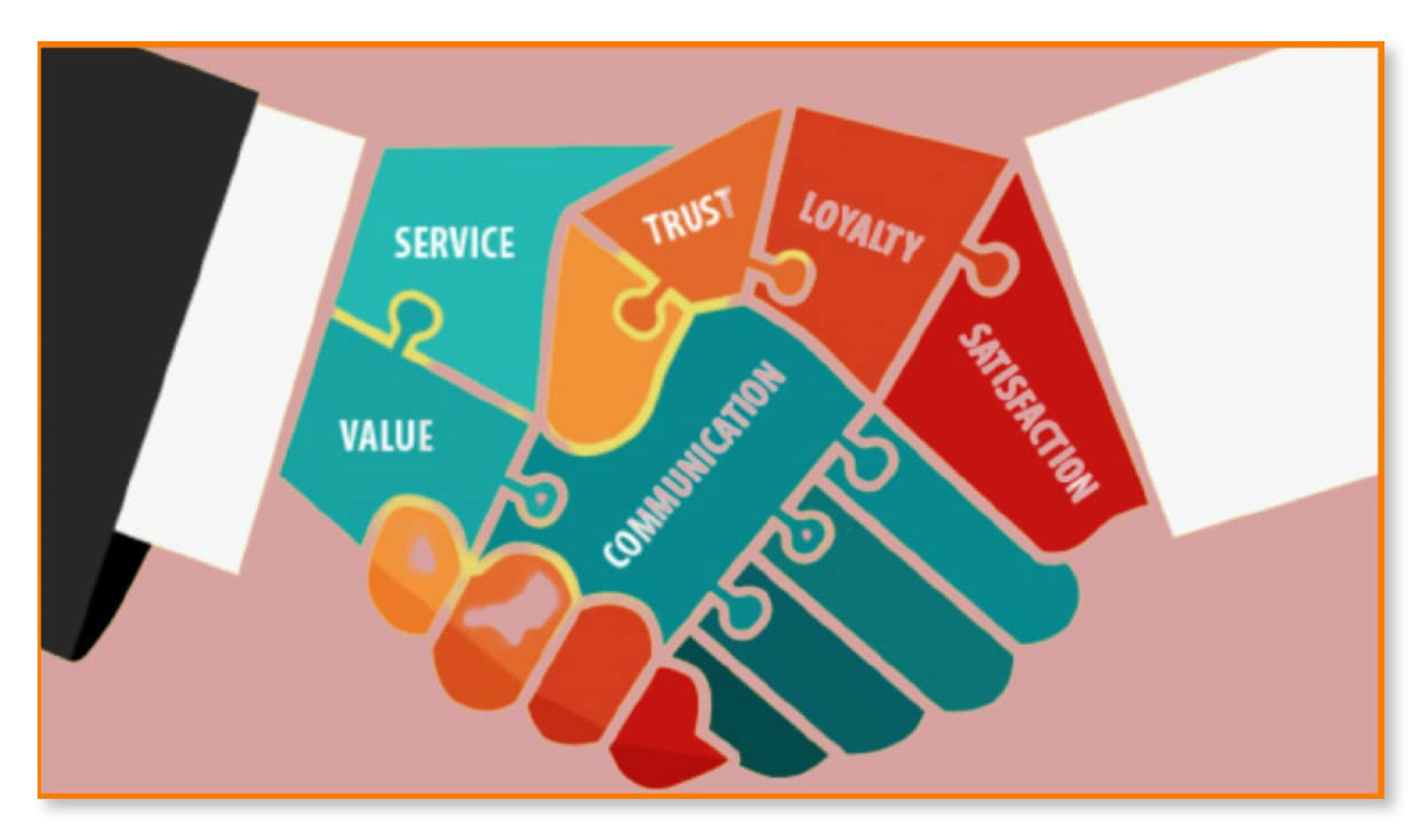
Emails with behavioral content have a magical way of winning people over. As a result, individuals respond better to your emails, and your marketing strategy as a whole performs better.
Customers rely on you more than other businesses since they may obtain useful information through your emails. They turn to you as their go-to option to the point where they won’t use anyone else’s service, even if it is cheaper.
7. Increases Revenue

Users receive precisely what they need when you start concentrating on user behavior and stop sending pointless emails. By doing this, you can encourage your current customers to become brand ambassadors and repeat customers. Your total revenue starts to soar as a result!
Starting a Behavioral Email Marketing Campaign – A Simple Guide!
You must deliver what the buyer expects to them at their door as an email marketer. To do this, it would be wise to incorporate behavioral email marketing into the plan. But how to begin can be confusing to you.
Here are some pointers for you as a beginner. As you become more active in behavioral email marketing, you will learn more about yourself. Here are a few simple guidelines to easily start a behavioral email marketing campaign;
1. Avoid Feeling Intimidated
Processing a ton of behavioral data could seem intimidating initially, depending on how many users you have. But if you approach it wisely, you won’t need to take into account every possible behavior. Our first piece of advice is to avoid becoming overawed.
By segmenting your consumer base and automating communications based on their activity, you can become behavior-driven. Try to anticipate the actions that your website’s visitors will likely perform and make your plans appropriately.
2. Compose a Team

Anybody can collaborate on that same behavioral email marketing plan, from the CMO of your business to a marketing intern. Consider everyone’s viewpoints as you model the new approach. Behavioral marketing is a hybrid of psychology and marketing. Both will be necessary for conjunction.
Someone needs to monitor and assess various journey events while another person models complex client journeys. For behavioral marketing, having a team with a varied range of skills is essential. To unlock the secrets of behavioral email marketing, the team’s collaboration is crucial.
3. Analyze and Expand Technologies

An email marketing automation tool or autoresponder is necessary for behavioral email marketing. Your email marketing solutions should be capable of sending an email when a user takes a certain action.
Check to see whether your ongoing email marketing platform can assist you with automatic email sending once you’ve decided on specific behavioral emails you want to send. You can research your rivals to find out what services and products they are employing.
If you use WordPress, several email marketing extensions, such as HubSpot or FluentCRM, can assist you with automatic email sending.
4. Section the Audience into Groups Based on Their Actions
For behavioral email marketing, taking into account various behavioral activities and sectioning your contact database is essential. After segmenting the list of contacts, you can set up particular mailings based on various activities.
Here are some instances of actions to monitor and base emails on:
- Once the registration is complete, send the new subscribers a welcome email. Give a brief introduction to your company in this email.
- To improve your communication with the new subscribers, educate them by including the pertinent information in the email.
- Send offer emails to individuals who have ceased engaging to get their attention back. It will gently prod them to finish their incomplete orders.
- Emails of reminders should be sent frequently regarding useful information. It might be a product shortage, free trials, etc., for a product they frequently buy.
Examples of Behavioral Emails to Send in Different Scenarios
As a company with several customers, you cannot take everyone’s conduct into account. You must consider whether responding to the behaviors that are typically displayed by people will advance your business.
Here are some scenarios and the relevant behavioral emails to deliver for each.
1. Scenario; When a User Views Particular Website Content
Users who view certain website material include those who engage in user behaviors, including website visits, page views, link clicks, product views, form submissions, downloads, etc.
You can modify alternative follow-up emails that would be beneficial to them based on these habits. Here are a few illustrations of the kinds of behavioral emails you can send:
- You can ask a visitor to enroll in your high quality newsletter after he has read a few blog pieces, for example. Include a subscription hyperlink within the email to simplify the procedure.
- Send a link or PDF to a case study on a related topic to anyone who visits or downloads an eBook.
- Send those who have read a few case studies an email with client endorsements.
- Offering a free consultation through email to someone who has thoroughly browsed your entire website—from the About Us section to the price, FAQs, Our Works, etc.—might convince them to make a purchase!
2. Scenario; If Visitors Are Not Interested
Learn which of your contacts are and are not opening your emails. It is also a good idea to know how long they have not spoken. Knowing which offers people are not responding to, the frequency of responses, etc., can help you figure out what is and is not working.
Your goal for the behavioral emails you send to these users should be to get them back. Here, offering them lucrative incentives and demonstrating your concern for them may be crucial. What you are able to do is:
- Make it clear to your readers in the emails that you appreciate them. Perhaps sending offers-only, tailored emails will work in this situation.
- Send the users an email to find out why they stopped participating and how you could make improvements. Offer something in exchange for an evaluation or piece of feedback to ensure that people participate.
- Send a follow-up mail with a catchy subject line that includes a CTA link.
3. Scenario; When Individuals Communicate on Social Media
Social media interactions include sending messages on social networks, tweeting, having your page mentioned, and people finding your website through social media handles. These people need to be treated carefully because they are really interested prospects.
To this kind of person, what sort of behavioral email should you send?
- Send them an email with your greatest and most recent products if they respond to a social media post about your product.
- Send them an email with a comparison list if you observe them comparing your goods on social media.
- Send them an email with a case study or product review if someone raises issues about your goods on social media.
- People that connect on social media have the best likelihood of purchasing a product, so strive to always extend offers to them.
4. Scenario; Whenever Someone Buys Anything
A person’s purchasing habits may include what they have bought, how frequently they buy things, how much they bought, when they bought them, etc. Here are a few examples of these types of emails you can send to your clients in light of these statistics.
- An email confirmation of the order and an email with shipping updates.
- You can cross-sell and up-sell related products. Send emails providing links to goods that are comparable to what they purchased.
- Customer satisfaction with the product can be questioned.
- Emails can be used to provide details about the warranty, return policies, and customer services.
5. Scenario; Unfilled Forms or Abandoned Carts
Do you realize that up to 70% of Internet shoppers abandon their shopping carts? And the main cause of this is a scheduling issue. People sometimes put off finishing the order because of other commitments. The same thing occurs when filling out a form.
There are many instances of customers taking unfinished activities. Withdrawals, cart abandonment, form filling, etc., are some examples. If they have started something but not finished it, you need to remind them to finish it.
You can use the following behavioral email examples to remind them:
- Offers have the power to make people feel pressured into placing their orders. After finishing the incomplete order, make an offer.
- Notify them via email that shipping is free as long as they finish the order by a certain date. They will finish the order as soon as possible to seize that chance.
- Users will feel more drawn to your email if you include free samples of the service they want to buy.
- Users may have trouble navigating your website. Email support for your website can be helpful to them.
Final Verdict
The only way to succeed in this cutthroat market is to keep your audience engaged at all times. And behavioral emails can keep consumers satisfied in ways that traditional email marketing cannot.
We hope this blog post has given you a better understanding of what behavioral email marketing is all about and will make it easier for you to start using it.
What type of email behaviors do you send? Do you see the results from them?
Comment below and let us know!
